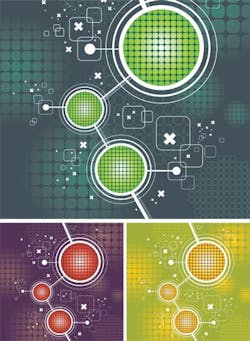(Updated story, Dec. 14) "These solutions scale capacity and integrate special functionality more easily than platforms based on dedicated hardware," says the Shannon, Ireland-based industrial-segment lead, Embedded and Communications Group, for Intel Corp. (www.intel.com), Santa Clara, Calif.Instead of deploying multiple system boards for control and human-machine-interface (HMI) functions, multi-core processors enable consolidation of applications onto a single board, he explains. That boosts processing power and flexibility, and increases control performance. For example, multi-core technology can decrease stability-upsetting and quality-damaging clock jitter, Gilvarry says.Intel's Atom processor and integration with specific input/output interfaces are key to control usage, Gilvarry says. "Without a doubt, we will see more multi-core CPUs (central processing units) being used in the industrial and embedded spaces as multi-core technology trickles down into smaller and lower-power designs," says Casey Weltzin, product manager, LabView Real-Time, with National Instruments Corp. (www.ni.com), the Austin, Texas-based test and automation supplier. "The Intel Atom processor is a very good example of this trend."Atom shrinks controlBeckhoff Automation LLC (www.beckhoffautomation.com), a Burnsville, Minn., automation vendor, now works with Intel on the next-generation Atom. "It has a low-heat, low-power footprint," notes Corey McAtee, Beckhoff technical marketing manager. He envisions a paperback-novel-size controller with low heat and power doing complete machine control, from HMI to programmable logic controller (PLC) control to motion to robotics.NI's Weltzin shares that vision. "Multi-core CPUs and the work being done by Intel are clearing the way for more complex algorithms to be used (e.g. machine control) that can improve the capabilities and efficiency of machines. Designers will be able to reduce power consumption and size of current applications that require a lot of computation," he says.Indeed, Intel's aim is to achieve a single architecture converged on what is essentially an embedded PC, Gilvarry says. "In the next several years, we may see many-core CPUs with 16, 32 or more cores," Weltzin predicts. This will force programmers to be much more adept at parallel application development, he says. "It will also push researchers and companies like Intel to invest in interconnect technology for networking the CPU cores on a chip."As the number of cores grows, however, real-time response gets shorter. McAtee explains, "In an EtherCat network with distributed controllers, the ‘slave' device becomes more like a microcomputer, capturing data at 10-20 microseconds, with 10-20 nanosecond jitter. With [our] upcoming TwinCat 3.0 software, which supports multiple cores, I can say I want one core to handle one high-speed task, such as registration correction, at a 50 microsecond tick. The next core would do the basic programmable logic state, which you could set at 10 milliseconds."Technology will evolve to enable more than the current four cores available in Industrial PCs. "More cores enable the controller to take on more functionality in software," observes McAtee. "Let's start looking at the future, when we have 64 cores. Where can we take it next? Vision, fuzzy logic, and so on." Look also at the power savings that multi-core technologies can deliver, he says. "You're reducing energy, so you're not producing heat. You can then start to look at reducing cooling and begin to rethink the functionality of the control cabinet. Maybe I can get rid of it?"Realizing or expanding multi-core's potential, though, first requires a multi-core-enabled factory floor. "A TwinCat version [TwinCAT 3] will be coming out in the next year that will allow each core dedicated to a process—one each for programmable logic controller, for human-machine interface, for motion, for robotics—all from one PC," says McAtee. And that will be yet another step toward controls consolidation via multi-core.C. Kenna Amos, [email protected], is an Automation World Contributing Editor.Intel Corp.www.intel.comNational Instruments Corp.www.ni.comBeckhoff Automation LLCwww.beckhoffautomation.com
Subscribe to Automation World's RSS Feeds for Columns & Departments
About the Author
C. Kenna Amos
Contributing Editor
Sign up for our eNewsletters
Get the latest news and updates

Leaders relevant to this article:
